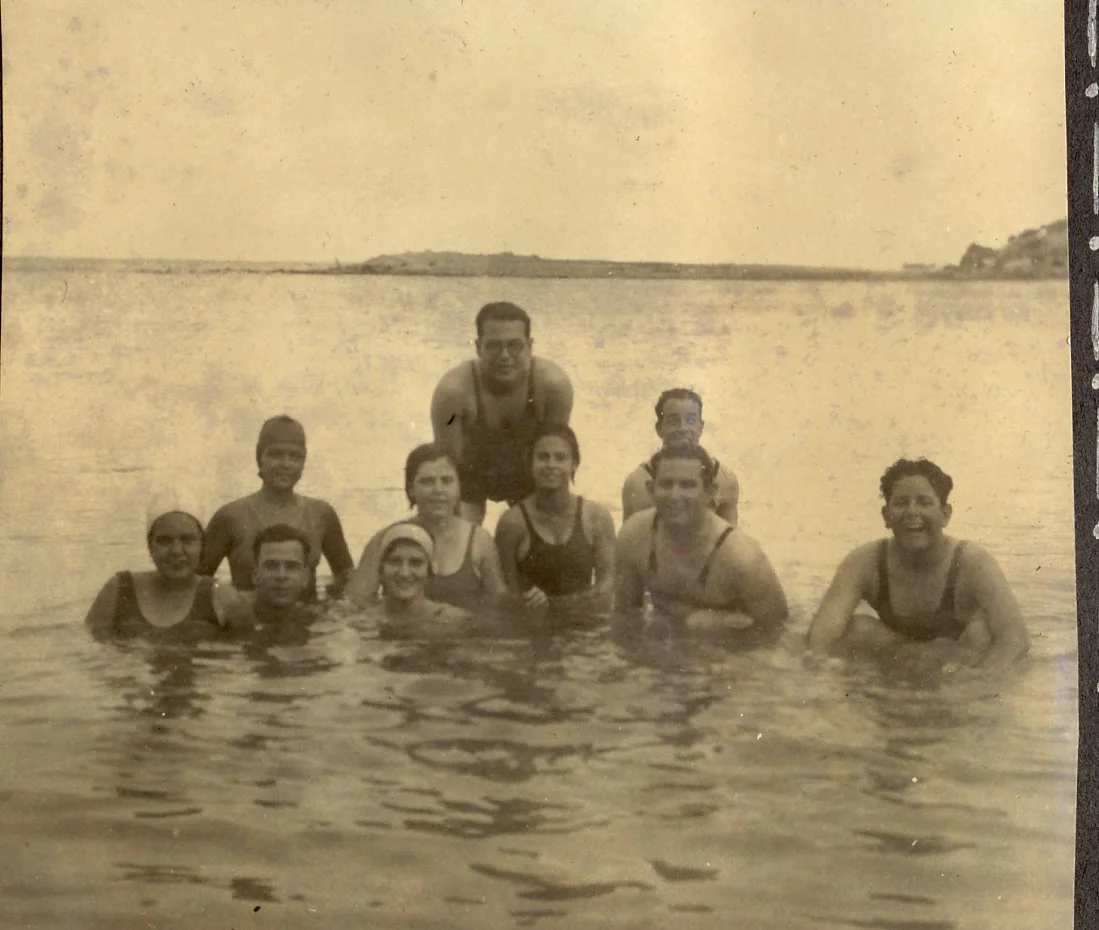WAAIGAT
In her later years in life, my mother loved to tell me the story of how she and a group of other teenage girls from the fancy neighborhood of Skarlo were playing in a boat on the Waaigat, that suddenly got loose from its moorings and began to drift away. They panicked, and did not know how to get the boat back, until one of them had the great idea to let the tallest girl step into the water and pull the boat back to the shore
Once in the water, the tall girl saw that she could not stand there and yelled out that she did not know how to swim. My aunt Luisa, who together with my mother had learned to swim when they lived in Cuba, courageously jumped into the filthy waters to save her friend and bring the boat back to shore.
photo by my grandfather Benjamin Gomes Casseres - from the nineteen forties
The spicy twist of the story is that Yaya, who had been my mother and Luisa’s nanny since their birth, (see nr. 13) and who was waiting for them on the shore, took the soaking wet girls to take a bath at the nearest house. This happened to be the house of a lady who was being socially ostracized by some of the families of the privileged classes, for divorcing her husband and marrying the man she loved. So, when the mother of the tall girl heard the story, she screamed out in indignation and dismay: “My daughter, in the bath of that woman!!!” a line that kept being repeated whenever the story was told.
Today, the story tells us about the treatment of a woman who was independent enough to follow her heart’s desires, when few women dared to ask for a divorce and suffered through loveless marriages, and husbands for whom it was the norm to have paramours and children ‘on the outside’.
It also tells us about the fact that some of the girls from the wealthier families who grew up in Curaçao, did not learn to swim, as there were no swimming facilities for women only, and their mothers would not let them expose their bodies in swimsuits to mixed company. My mother and her sister, on the other hand, grew up in Cuba, where they learned to swim in the sea, and the norms were not so strict, apparently.
Just like the house of the ostracized woman, the houses along the Skarlo side of the Waaigat had their fronts to the fashionable Skarlo-weg and stood with their backsides to the water. Already at the time of the construction of the fancy houses, in the eighteenth and nineteenth centuries, the Waaigat was used as a convenient dump for human waste that was carried to the water in large tins on the heads of women whose job was to go around from house to house to collect the waste. I assume it was done by slaves at first, and later by former slaves and then by their descendants.
In my childhood, the Waaigat, a body of water that was connected by a narrow opening to the larger inner bay of the harbor, the Schottegat, was one large cesspool – the entire sewage system of the adjacent neighborhoods flowed into it, continuing the age-old dumping tradition. Still, it did not stop me from skipping stones over the water and watching the makwakus soar over its surface, when we walked along its shores to visit my grandparents in Skarlo.
My father, an amateur meteorologist, could tell when a hurricane was brewing – not only when his barometers went down, but also when the Waaigat was flat like a mirror. Here, my grandfather Benjamin Gomes Casseres captured that mirror.
****



